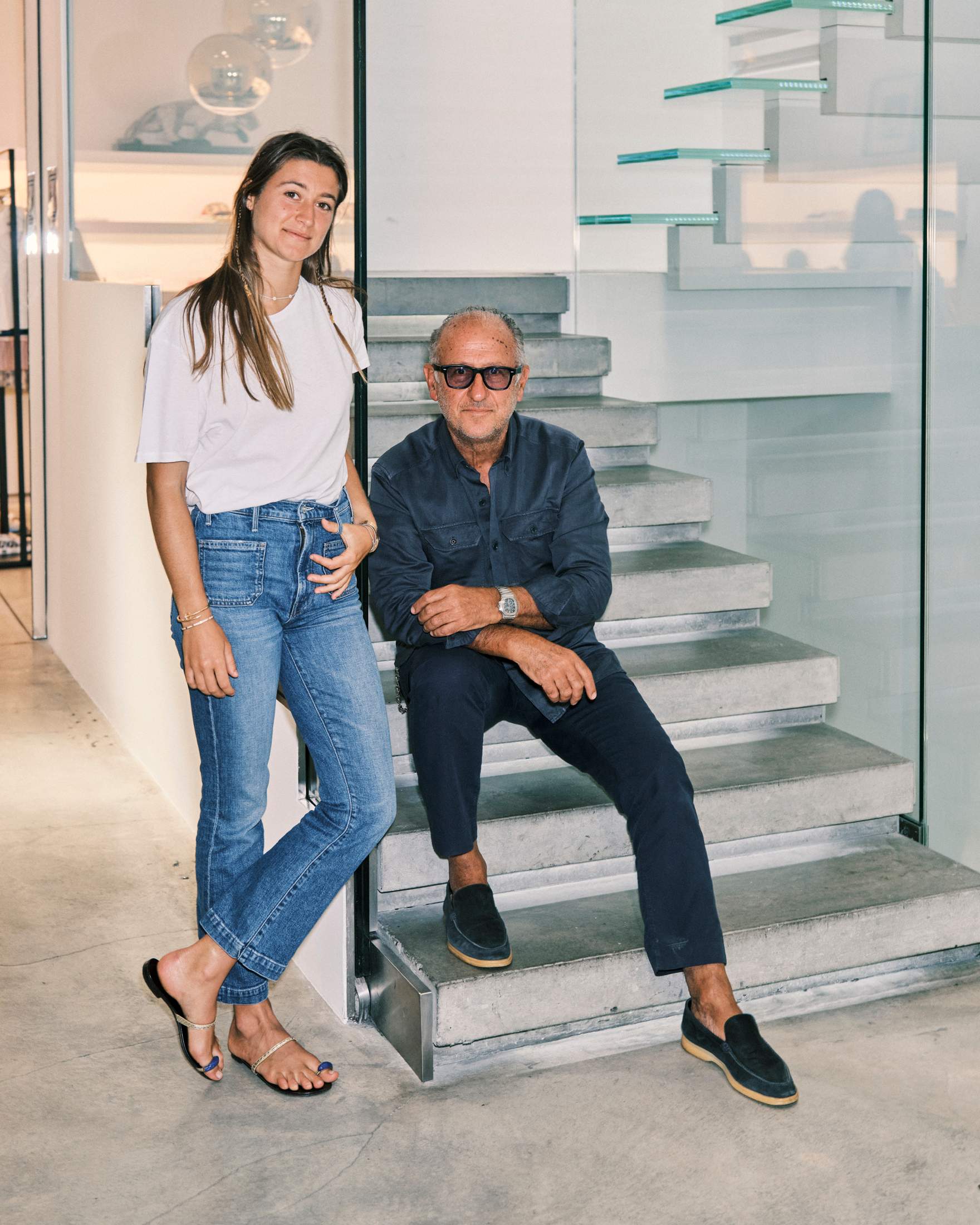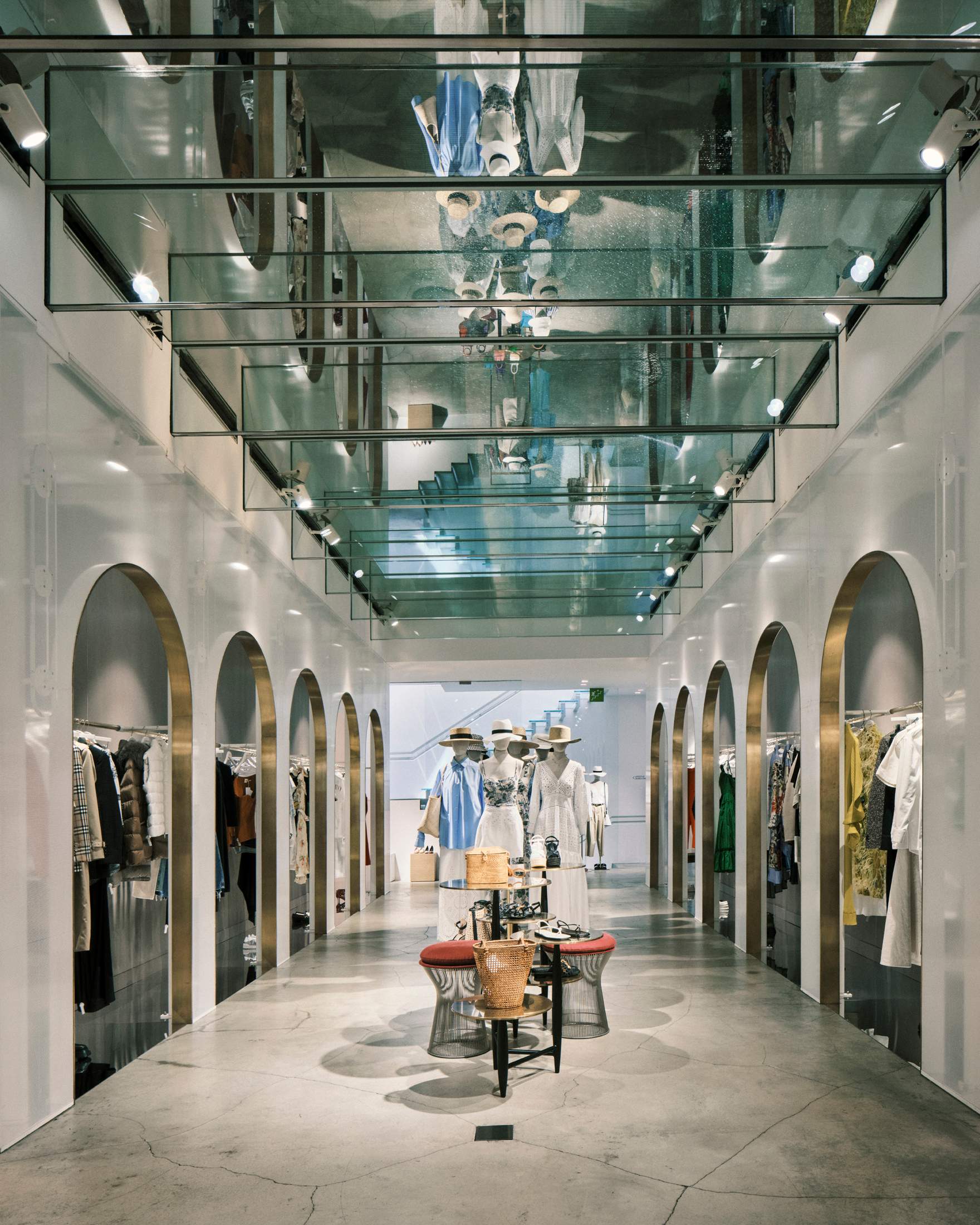Fashion / Italy
Generation game
Department store Luisa Via Roma opened its doors in 1929 and has been at the forefront of Italian retail ever since. Now with a pair of generations plotting its course, we speak to two members of the shop’s founding family about what the future holds.
Established as an upmarket Florentine department store in 1929, Luisa Via Roma has grown into one of Italy’s most famous luxury fashion retailers. In the 1960s and 1970s it was the city’s go-to for cutting-edge ready-to-wear. Later it became one of the world’s first multi-brand retailers to go digital, with its e-commerce operations starting in 1999. The family business still operates from its department store on Via Roma in Florence, and has become known internationally as an online high-style tastemaker. Fashion successes like Sweden’s Totême and New York’s Khaite were given early exposure by Luisa Via Roma before reaching more mainstream success.
In October the company took on a €130m investment from Milan-based equity fund Style Capital, setting Luisa Via Roma on the path of global expansion. While the aim is to become a publicly traded company, the Panconesi family maintains 60 per cent of the empire they created. Andrea Panconesi took over the business from his grandmother Luisa when he was 18, and his 25-year-old daughter Annagreta Panconesi (pictured, on left, with Andrea) is creative director. They sat down with The Forecast to talk family business and global expansion.

After more than 90 years as an independent family business, why take on investment now?
Andrea Panconesi: There are just 10 major digital retailers like us in Europe and the US, but for a long time we’ve been the only large online multi-brand shop to remain completely in private hands. Luisa has been growing by 30 per cent year-on-year but we need to grow faster to keep up with the competitors as the cost of online marketing – the price of getting a customer to find and choose Luisa Via Roma over other outlets – is sky-rocketing.
You had no shortage of business suitors. How did you settle on a deal?A ndrea: We received dozens of offers but we chose a partner, Style Capital, who shares our way of thinking. We have very clear ideas about the future and with this increase [in equity], we can grow internationally, especially in our primary market, the US. We’ll be able to beef up our logistics, which is the foundation of any online retailer and invest further in our proprietary digital platform. All of our staff will remain but we’ll add many more engineers.
How are you growing your US appeal?
Annagreta Panconesi: We’ve brought on a wide range of US brands, from emerging designers such as Sid Neigum and Peter Do to established names like Gabriela Hearst, Adam Lippes and Prabal Gurung. And the new generation of customers there is very aware of a company’s social responsibility, which is something that’s very important to us and that we can cultivate now with this investment. A part of our site is already dedicated to sustainable fashion brands and we’re planning our own resale branch of the online shop, like Vestiaire Collective, to create a circular market with vintage and second-hand designer goods, because that idea is so fundamental for fashion now.
Investors can be more interested in profit than a company’s social conscience. How will you navigate this?
Andrea: We made sure that our investor shared our sensibility. You can’t operate a business just based on profits any more; you need positive results for the environment and for the wellbeing of the world. Our business needs to be good, in the moral sense. We’ve partnered with charities, such as Unicef for which we raised €5m with an event this summer, and we’ll continue to do more in that respect. Society needs to change the way in which it operates, because what’s at stake is our survival. I hope that more businesses will adopt this philosophy.
You’re known for showcasing small designers. How do you choose them?
Annagreta: My dad used to meet designers himself and fret for days about what to order. But today I have a team of 35 buyers and we get everything done quickly because we have a clear idea about what we are looking for: primarily brands making a very high-quality product, often in Italy, that have a precise and recognisable identity. They need to reflect our style of luxury, to be seen on actors or other people in the public eye that reflect our taste and to have a well-organised business structure with reliable manufacturing. Many are still emerging and not that well known. But if we believe in their strategy when they tell us about their plans, and we believe in the capability of the person running the brand, we put our faith in them, which means investing our time and money in photographing and marketing their line. We carry more than 600 brands now, and we try to add 15 small designers to our mix every season. This year we’ve added Peter Do, Gimaguas, Amina Muaddi, Casablanca, Magda Butrym, Totême, Martine Serre, Christopher Esber and more.
Why did Luisa Via Roma leap into online retail so early?
Andrea: It happened by chance, just like all of the best things in my life, including my children. Nicola Antonelli, who is the son of one of my collaborators and who still works with us in marketing, came up with the idea of an online shop for Luisa and offered to create it for free. I couldn’t fathom what he was talking about but went for it anyway. Immediately after it launched I understood the potential of this tool, which allowed me to simultaneously share images of the collections I was buying for the shop with my clients abroad, where previously I was actually faxing and mailing images to them one by one. Then I hired engineers from the University of Pisa to create the system to run the online business, because there was nothing in those days – no Google, no social media, nothing. It was a different internet.
“Society needs to change the way in which it operates, because what’s at stake is our survival”
What’s next for Italian retail?
Andrea: Italy is made up of hundreds of cities and even little towns have had their own high-end multi-brand boutique as a point of reference for style culture. These small shops in small cities have been the force that imbued Italians with a passion for dressing well, introducing locals to luxury brands and to lesser-known brands that otherwise wouldn’t get exposure. Today the shops can’t keep up with online competitors and they risk going under. We need an organisation to save these boutiques. If they die out, fashion dies out, because fashion is born in Italy – it belongs to our bella vita – from fine Italian fabrication to the birth of ready-to-wear here in Florence. We need these shops to join forces in order to expand their online presence.
As a father-and-daughter team, what have you two taught each other?
Andrea: To dare! To throw yourself into new areas that are beyond your comfort zone – that’s what guides the progress of humanity. I didn’t know what I was doing with fashion when I was young. I was too distracted by the models to pay attention to the clothes themselves but I was curious about exploring things that were new or unknown to me. We were the first to order Kenzo in Italy. I didn’t sell a single kimono of theirs for three seasons but then it exploded.
Annagreta: We’re very different; we love each other but we could kill each other sometimes, at work. I’m much more conservative in certain things. I love history but he wants to erase history and only focus on the future. I’m interested in craft, in the way things were made in the past, so I bring that outlook to the brands I select for the shop. But I admire his forward- looking vision. Our approaches are opposite but they work well together.



